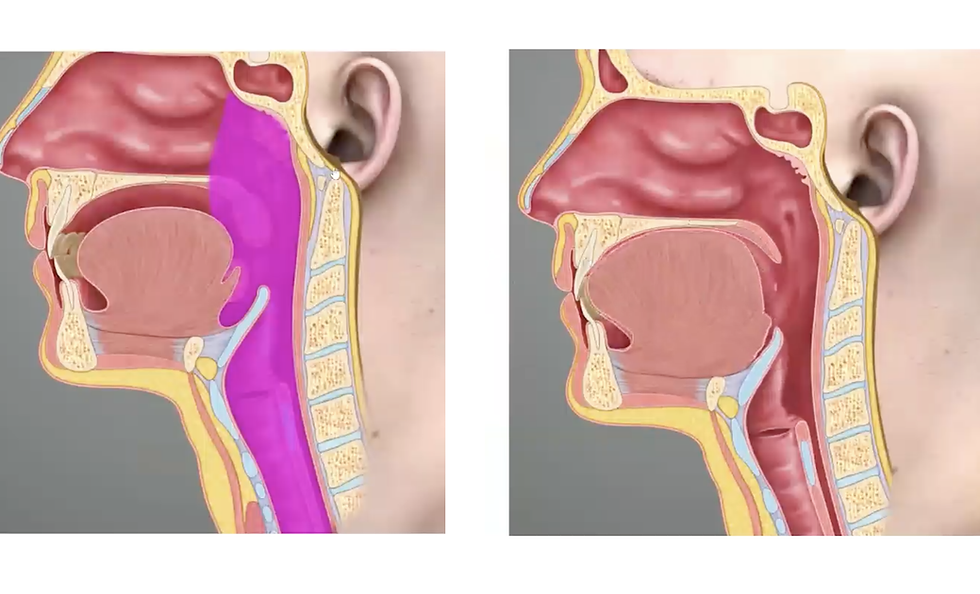Test Your Knowledge!
- Dr. Audrey Yoon

- Sep 8
- 2 min read
Updated: Sep 10
As a dentist, you play a critical role in recognizing, managing, and referring patients with sleep-disordered breathing. From early detection to growth modifications and interdisciplinary care, your actions can have a lasting impact on airway health and craniofacial development.
Take this quick quiz to see how well you understand the key concepts from our recent Dental Sleep Medicine Course lecture and reinforce your role in shaping better outcomes for your patients.
1. Which of the following is NOT Dentistry’s role in Sleep Related Breathing Disorders in 2018 ADA Policy ?
A. Screen patients for SRBD as part of a comprehensive medical and dental history
B. Recognize symptoms such as sleepiness, choking, snoring or witnessed apneas and an evaluation for risk factors such as obesity, retrognathia, or hypertension
C. Refer as needed to appropriate physicians for proper diagnosis.
D. In children, diagnose the obstructive sleep apnea and deficient growth with cone beam CT X-ray.
2. Which of the following is NOT included in the the AAO white paper summary?
A. It is recommended that the orthodontist refer patient to an otolaryngologist when nasal obstruction or adenotonsillary hypertrophy is present.
B. The decision for an orthodontist to participate in the treatment of OSA is a choice
C. There are some orthodontic treatments which has been shown to increase the likelihood of OSA.
D. Interdisciplinary treatment of OSA helps to serve the best interests of patient with OSA.
3. Which of the following is the mechanism for pathogenesis of enuresis in patients with sleep-disordered breathing?
A. Dampening effects of OSA on arousal response
B. Changes in bladder pressure
C. Secretion of antidiuretic hormone
D. Increase of atrial natriuretic peptide
E. All of above
4. Which of the following is NOT a mechanism by which rapid palatal expansion improves SDB?
A. Improves nasal breathing by increasing internal nasal valve
B. Tongue posture change forward and downward
C. Reduce the Pcrit
D. Possibly reduce the size of the lymphoid tissue
5. Which of the following is NOT true about Nitric Oxide ?
A. Reduce vasodilation
B. Produced in the nose and sinuses
C. Strong neurotransmitter that increases ventilation-perfusion ratio
D. Boost immune system
Question 1: Answer D: We cannot diagnose the obstructive sleep apnea with x-rays.
Question 2: Answer C: AAO strongly stated that no orthodontic treatment has been shown to cause or increase the likelihood of OSA.
Question 3: Answer E: All of the above.
Question 4: Answer B: With palatal expansion, tongue posture may improve, forward and upward
Question 5: Answer A: Nitric Oxide encourages vasodilation


Comments